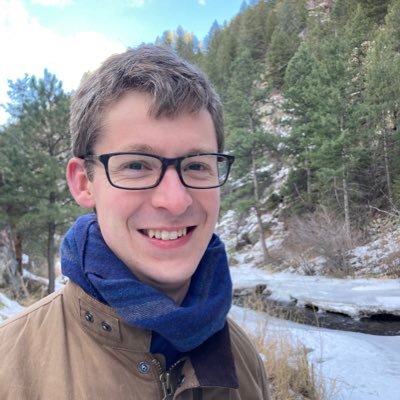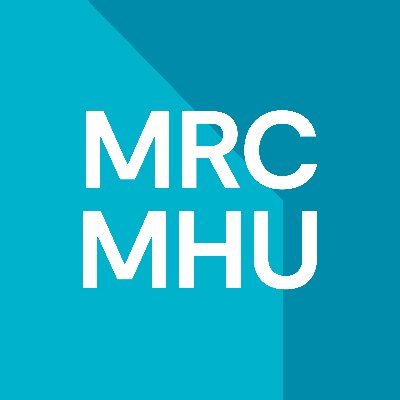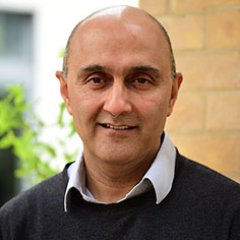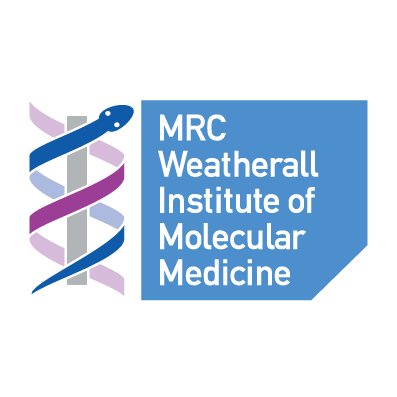
Asger Jakobsen
@asger_jakobsen
Followers
143
Following
149
Media
18
Statuses
59
Scientist and doctor studying clonal haematopoiesis and leukaemia @MRC_WIMM
Oxford, England
Joined February 2019
Mutant HSCs in human clonal haematopoiesis have an attenuated response to inflammation and ageing, which may give them a selective advantage. Happy to share our new paper published in @CellStemCell: https://t.co/TehWdhmkVw A thread below… /1
NEW: Study published in @CellStemCell by @vyas_lab, with the Dick and Xie labs at @pmcancercentre, uncovers key details of clonal outgrowth in blood cells with ageing. Read more: https://t.co/anIsqOi9sM Congrats to @asger_jakobsen, @SvenTurkalj, @pvyas_oxford & all authors!
7
14
61
Our paper on detecting and quantifying clonal selection from a single bulk sequencing sample is out! This was a great collaboration with @pvyas_oxford, Thomas Höfer, @asger_jakobsen and @NaserAnsariPour. Read the full story here: https://t.co/bpA30Lyy9Q
nature.com
Nature Genetics - SCIFER detects clonal selection in whole-genome sequencing data using a population genetics model. Applied to a range of somatic tissues, SCIFER quantifies stem cell dynamics and...
2
20
55
Excited to share our latest study in @JCO_ASCO on improving risk stratification for older patients (≥60 yrs) with Acute Myeloid Leukemia (AML)! We developed a novel prognostic model: AML60+. #Leukemia #AML link: https://t.co/8TM1pS3FdC 🧵1/9
ascopubs.org
PURPOSEAML is a genetically heterogeneous disease, particularly in older patients. In patients older than 60 years, survival rates are variable after the most important curative approach, intensive...
4
12
37
Delighted to share our latest work performed in close collaboration with the Nerlov lab. Hematopoietic stem cell heterogeneity and age-associated platelet bias are evolutionarily conserved | Science Immunology
science.org
In vivo barcoding and single-cell RNA sequencing identifies platelet-biased human bone marrow HSCs.
9
17
101
Also a huge thanks to all the patients who took part, and the MRC and @LeukUK @MRC_MHU
@MRC_WIMM
@DakinLabGroup
0
0
2
This work would not have been possible without @SvenTurkalj, @pvyas_oxford, our fantastic collaborators @andygxzeng, @stephxie, John Dick and many others. It has been a pleasure to work together! Look out for more stories to come about inflammatory memory in the HSC2 population!
1
0
4
This suggests a model where mutant HSCs are selected because they are relatively resistant to the deleterious effects of inflammation and aging. /12
1
0
2
What role do mutations have in this context? Comparing MUT and WT cells from CH samples shows expression of inflammatory & aging signatures is attenuated in MUT cells. These differences are clearest in HSC2 indicating this may be where mutations have greatest impact. /11
1
0
0
Chronic inflammation, increased NF-κB signaling and aging have been associated with increased quiescence and functional decline in HSCs. So these results suggest HSCs in CH are deleteriously affected by the aging BM environment. /10
1
0
0
This prompted us to ask if there was further heterogeneity in the HSC compartment. Surprisingly, subclustering showed HSCs segregated into 2 main populations. One of these, HSC2, accumulates in individuals with CH and is enriched for TNF/NFKB, aging and quiescence signatures. /9
1
0
1
However, most clonal expansion appears to occur within the HSC. Interestingly, when compared to controls without CH, both MUT and WT cells from CH samples were enriched for inflammatory and aging gene signatures, suggesting they are impacted by an inflammatory environment. /8
1
0
0
What is the basis of TET2 myeloid bias? Compared to WT cells from CH samples, TET2-mut cells show premature upregulation of mature myeloid gene expression programmes with increased activity of myeloid transcription factors. /7
1
0
1
Mapping out CH clones shows that both DNMT3A and TET2-mutant clones expand within the HSC, but TET2-mut clones show more pronounced expansion in progenitors, particularly in the myeloid lineage. /6
1
0
1
Single-cell genotyping often suffers from high allelic dropout (ADO) leading mutant cells to be misassigned as WT, especially when relying on mRNA expression which differs between cell types. We show that TARGET-seq+ achieves genotyping rates of >90% with low ADO (5-15%). /5
1
0
2
We developed TARGET-seq+ by incorporating Smart-seq3 chemistry with TARGET-seq to obtain high sensitivity single-cell genotyping, transcriptome and immunophenotyping. We applied this to CH samples and age-matched controls to analyze MUT and WT HSPCs from the same individuals. /4
1
0
1
Studies of human CH have been limited, partly because bone marrow samples from healthy individuals are rarely available. To overcome this, we collected samples from patients having hip replacement surgery in collaboration with @BotnarOxford and screened these for CH mutations. /3
1
0
1
About 70% of cases of clonal haematopoiesis (CH) are caused by mutations in DNMT3A and TET2. Elegant studies in model systems have shown these mutations confer a competitive advantage but it’s unclear how they impact human haematopoiesis and lead to clonal expansion over time. /2
1
0
0
NEW: Researchers from the Laboratory of Gene Regulation, led by @MiraKassouf & Doug Higgs, have identified a new type of non-coding DNA that helps to explain how our DNA is read. 👓🧬 Published today in Cell (@CellCellPress)! Read the full story here: https://t.co/E6oTmmEBqh
1
23
78
If you’re interested in studying how mutations alter gene regulation take a look at our new protocol for single-cell ATAC-seq with high sensitivity genotyping. #GTAC This is a detailed description of the method published earlier this year:
Delighted to share the detailed STAR Protocol linked to our recently published GTAC method, which aims to uncover how cooperating somatic mutations alter chromatin regulation at single-cell resolution! @asger_jakobsen @angusgroom @FARadtke @pvyas_oxford
0
1
12
Did you know that severe inflammation leaves a lasting impact on our blood stem cells? Excited to share our pre-print where we identified an HSC subset that remembers past inflammatory stress, which is linked to human aging and clonal hematopoiesis! https://t.co/tQX34iAipN 1/
3
28
104









